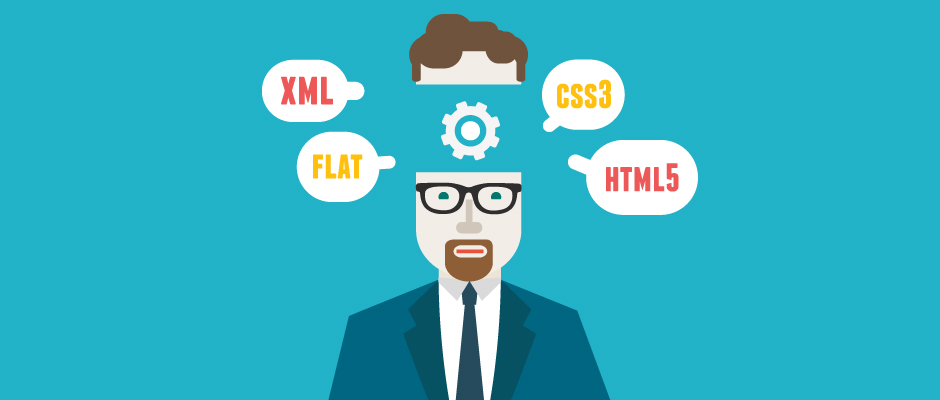 Web Front-end
Web Front-end
 Front-end Q&A
Front-end Q&A
 How does data flow downwards through props in React component hierarchies?
How does data flow downwards through props in React component hierarchies?
How does data flow downwards through props in React component hierarchies?
Jul 12, 2025 am 02:12 AMIn React, data flows unidirectionally from parent to child components through props. 1) Props are properties passed from a parent to a child component, acting like function parameters. 2) Data ownership remains with the parent, ensuring predictability and simplicity as children only use but do not modify received data. 3) When passing data through multiple levels, props can be drilled down manually or managed more efficiently using Context or state management libraries in larger apps. 4) Best practices include destructuring props, setting default values, documenting prop usage, and treating props as read-only within child components. This top-down flow ensures scalable and maintainable applications when applied thoughtfully.

In React, data flows from parent components to child components through props. This unidirectional flow ensures that the state is predictable and easier to manage, especially in larger applications.

What Are Props and How Do They Work?
Props (short for "properties") are like function parameters for components. When you pass data from a parent component to a child, you're essentially giving that child component some information it might need to render or behave correctly.

For example:
function ParentComponent() {
const message = "Hello from parent";
return <ChildComponent text={message} />
}Here, text is a prop passed to ChildComponent. Inside the child, you can access it like this:

function ChildComponent(props) {
return <p>{props.text}</p>
}You can pass any type of data—strings, numbers, objects, arrays, functions—whatever makes sense for your use case.
Why Data Flows Downwards
React's design encourages a top-down data flow. That means the parent component owns the data and passes it down as needed. This keeps things simple: children don’t modify the data they receive—they just display or use it.
This also helps with predictability. If something changes, you know where to look—the parent component holds the source of truth.
Think of it like a family tree: parents make decisions, kids follow along. You don’t let a grandchild update the family rules directly.
Passing Data Through Multiple Levels
Sometimes you need to pass data through several layers of components. For example:
Grandparent → Parent → Child
If Grandparent has data that Child needs, one way is to pass it through Parent, even if Parent doesn't use it directly. This is sometimes called "prop drilling."
It looks like this:
function Grandparent() {
const user = { name: 'Alice' };
return <Parent user={user} />
}
function Parent({ user }) {
return <Child user={user} />
}
function Child({ user }) {
return <p>Welcome, {user.name}</p>
}While this works fine for small apps, it can get repetitive in larger ones. In those cases, you might consider using React Context or a state management library like Redux or Zustand to avoid passing props manually at every level.
But for many use cases, especially smaller components or clear ownership models, plain props are perfectly good.
A Few Tips When Working With Props
Use destructuring to keep code clean:
function ChildComponent({ text, color }) { return <p style={{ color }}>{text}</p> }Set default values when appropriate:
ChildComponent.defaultProps = { color: 'black' }Document what each prop does, especially in shared components.
Avoid mutating props inside the child—treat them as read-only.
That’s how data moves down through components in React. It's a straightforward system that scales well when used thoughtfully.
The above is the detailed content of How does data flow downwards through props in React component hierarchies?. For more information, please follow other related articles on the PHP Chinese website!

Hot AI Tools

Undress AI Tool
Undress images for free

Undresser.AI Undress
AI-powered app for creating realistic nude photos

AI Clothes Remover
Online AI tool for removing clothes from photos.

Clothoff.io
AI clothes remover

Video Face Swap
Swap faces in any video effortlessly with our completely free AI face swap tool!

Hot Article

Hot Tools

Notepad++7.3.1
Easy-to-use and free code editor

SublimeText3 Chinese version
Chinese version, very easy to use

Zend Studio 13.0.1
Powerful PHP integrated development environment

Dreamweaver CS6
Visual web development tools

SublimeText3 Mac version
God-level code editing software (SublimeText3)

Hot Topics
 How can CSS be used to implement dark mode theming on a website?
Jun 19, 2025 am 12:51 AM
How can CSS be used to implement dark mode theming on a website?
Jun 19, 2025 am 12:51 AM
ToimplementdarkmodeinCSSeffectively,useCSSvariablesforthemecolors,detectsystempreferenceswithprefers-color-scheme,addamanualtogglebutton,andhandleimagesandbackgroundsthoughtfully.1.DefineCSSvariablesforlightanddarkthemestomanagecolorsefficiently.2.Us
 What are some common techniques for vertically centering content using CSS?
Jun 12, 2025 am 10:27 AM
What are some common techniques for vertically centering content using CSS?
Jun 12, 2025 am 10:27 AM
Vertical centering content can be implemented in CSS in a variety of ways, the most direct way is to use Flexbox. 1. Use Flexbox: By setting the container to display:flex and in conjunction with align-items:center, vertical centering of child elements can be easily achieved; 2. Combination of absolute positioning and transform: suitable for absolute positioning elements, by setting top and left to 50% and then using translate (-50%,-50%) to achieve centering; 3. CSSGrid: Through display:grid and place-items:center, horizontal and vertical centering can be achieved at the same time. If only vertical centering is required, use align
 Can you explain the difference between em, rem, px, and viewport units (vh, vw)?
Jun 19, 2025 am 12:51 AM
Can you explain the difference between em, rem, px, and viewport units (vh, vw)?
Jun 19, 2025 am 12:51 AM
The topic differencebetweenem, Rem, PX, andViewportunits (VH, VW) LiesintheirreFerencepoint: PXISFixedandbasedonpixelvalues, emissrelative EtothefontsizeFheelementoritsparent, Remisrelelatotherootfontsize, AndVH/VwarebaseDontheviewporttimensions.1.PXoffersprecis
 What are the key differences between inline, block, inline-block, and flex display values?
Jun 20, 2025 am 01:01 AM
What are the key differences between inline, block, inline-block, and flex display values?
Jun 20, 2025 am 01:01 AM
Choosing the correct display value in CSS is crucial because it controls the behavior of elements in the layout. 1.inline: Make elements flow like text, without occupying a single line, and cannot directly set width and height, suitable for elements in text, such as; 2.block: Make elements exclusively occupy one line and occupy all width, can set width and height and inner and outer margins, suitable for structured elements, such as; 3.inline-block: has both block characteristics and inline layout, can set size but still display in the same line, suitable for horizontal layouts that require consistent spacing; 4.flex: Modern layout mode, suitable for containers, easy to achieve alignment and distribution through justify-content, align-items and other attributes, yes
 What are the advantages of using CSS Grid for complex two-dimensional page layouts?
Jun 12, 2025 am 10:28 AM
What are the advantages of using CSS Grid for complex two-dimensional page layouts?
Jun 12, 2025 am 10:28 AM
CSSGridisapowerfultoolforcreatingcomplextwo-dimensionallayoutsbyofferingcontroloverbothrowsandcolumns.1.Itallowsexplicitdefinitionofrowsandcolumnswithflexiblesizingusingfeatureslikegrid-template-columns:repeat(auto-fit,minmax(200px,1fr))forresponsive
 What are CSS Houdini APIs, and how do they allow developers to extend CSS itself?
Jun 19, 2025 am 12:52 AM
What are CSS Houdini APIs, and how do they allow developers to extend CSS itself?
Jun 19, 2025 am 12:52 AM
CSSHoudini is a set of APIs that allow developers to directly manipulate and extend the browser's style processing flow through JavaScript. 1. PaintWorklet controls element drawing; 2. LayoutWorklet custom layout logic; 3. AnimationWorklet implements high-performance animation; 4. Parser&TypedOM efficiently operates CSS properties; 5. Properties&ValuesAPI registers custom properties; 6. FontMetricsAPI obtains font information. It allows developers to expand CSS in unprecedented ways, achieve effects such as wave backgrounds, and have good performance and flexibility
 What is the significance of Vue's reactivity transform (experimental, then removed) and its goals?
Jun 20, 2025 am 01:01 AM
What is the significance of Vue's reactivity transform (experimental, then removed) and its goals?
Jun 20, 2025 am 01:01 AM
ReactivitytransforminVue3aimedtosimplifyhandlingreactivedatabyautomaticallytrackingandmanagingreactivitywithoutrequiringmanualref()or.valueusage.Itsoughttoreduceboilerplateandimprovecodereadabilitybytreatingvariableslikeletandconstasautomaticallyreac
 How can CSS gradients (linear-gradient, radial-gradient) be used to create rich backgrounds?
Jun 21, 2025 am 01:05 AM
How can CSS gradients (linear-gradient, radial-gradient) be used to create rich backgrounds?
Jun 21, 2025 am 01:05 AM
CSSgradientsenhancebackgroundswithdepthandvisualappeal.1.Startwithlineargradientsforsmoothcolortransitionsalongaline,specifyingdirectionandcolorstops.2.Useradialgradientsforcirculareffects,adjustingshapeandcenterposition.3.Layermultiplegradientstocre





